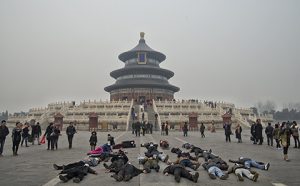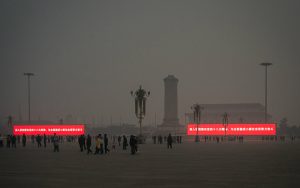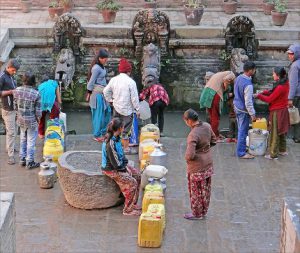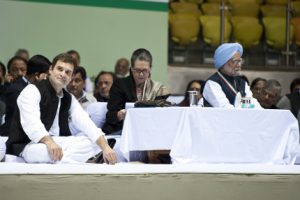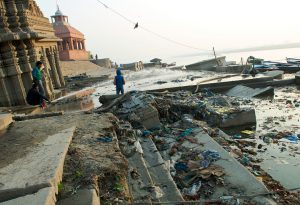If how happy we feel is largely determined by comparison with others, then perhaps the misery of the smog has made us all equal. We all have to cope with it, and have no choice but to keep breathing through our masks. In, out. In, out.
We must breathe to live, but the PM10 pollution we can see, and the PM2.5 pollution we can’t, constantly test our will to keep doing so. Different reactions to the smog show the truth of Chinese culture today. Many choose to ignore the smog as best they can, but others are driven to act and speak out.

In February people in Chongqing took to the streets with masks and placards to protest again the smog (Image by Chinanews.com)
When we are powerless to solve a problem but unwilling to give up we find other ways to approach it – a process similar to that of artistic creation. Painting, singing, performance art – they might not solve the problem, but that doesn’t make them useless. These methods attract attention and get people thinking about the issue.
The people who placed masks on statues in Beijing, or the performance artists in Chongqing, are not professional artists. But these brave and clever acts put smog, something which is difficult to discuss, onto the public agenda.

Performance artists in Chongqing call for action on air pollution (Image by Chinanews.com)
Of course, these artistic expressions are indirect and implicit – both subtle and ineffective, a safe zone between silence and speaking out. This is of course due to fear. They are braver than those who stay silent, but not as effective as those who speak out directly, and so the problem remains unresolved. And as one Sina Weibo microblogger @Xietianzhuo pointed out: “Who cares if it’s art or not, anyone expressing themselves in a public place like that is very awesome. Go and pray yourself if you’ve got the guts…”
